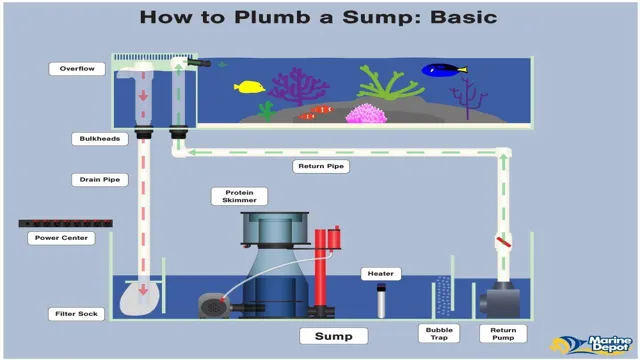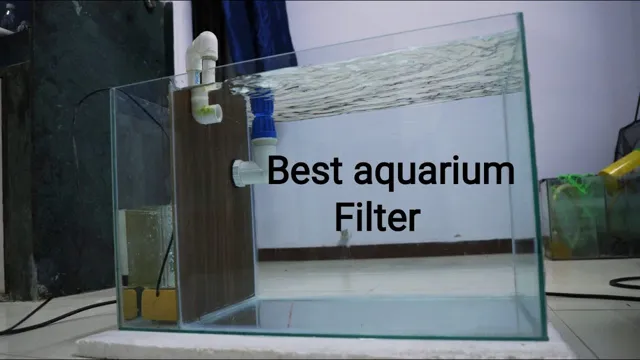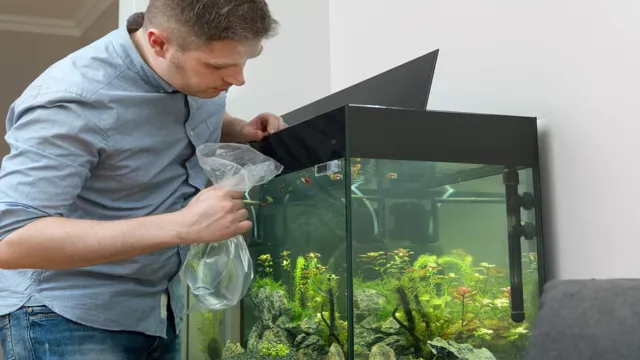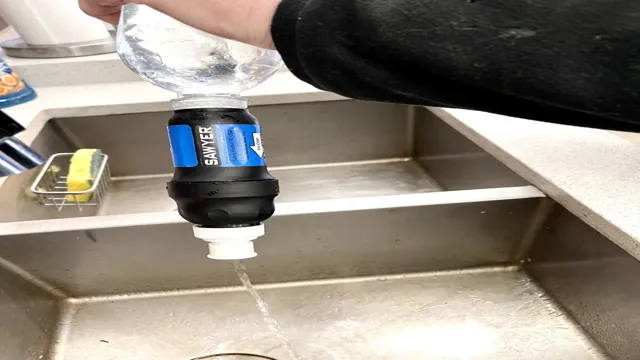If you are an aquarium owner, you know the importance of maintaining a healthy environment for your fish. One factor that can lead to issues in your aquarium is high levels of salt. Unfortunately, sometimes, salt levels can get too high, whether it’s due to an accidental overdose of medication or the use of saltwater in a freshwater tank.
But don’t worry because there are ways to bring down salt levels in your aquarium. High salt levels can create stress for your fish and may even lead to health issues in the long run. Fortunately, with a few adjustments and patience, you can correct the situation and bring your aquarium back to a healthy balance.
It’s important to note that as you lower the salt levels, you need to keep an eye on other factors such as temperature and pH levels. In this article, we will go over some tips and tricks on how to bring down salt levels in your aquarium and promote a healthy and happy environment for your fish. From water changes to using a reverse osmosis system, we’ll cover all the essential steps you need to take.
With the right approach, you can get your aquarium back to a balanced state and ensure the well-being of your beloved aquatic pets. So, let’s dive in and learn how to fix high salt levels in your aquarium!
Identifying the Problem
If you’re noticing that the salt level in your aquarium is too high, don’t worry. This is a common issue that many aquarium owners face. High salt levels in aquariums can be harmful to fish and other aquatic creatures.
The first step in bringing the salt level down is to identify what is causing it to be high in the first place. One possible reason is that too much salt mix was added during a water change. Another reason could be that the water evaporated, leaving behind the salt that was in the water.
After identifying the cause, the next step is to perform a partial water change. This helps to dilute the salt concentration in the water. It’s important to do this gradually over a few days, as sudden changes in water chemistry can be harmful to fish.
Testing the water regularly and monitoring the salt levels will help ensure that the problem is resolved. Overall, with some identification and careful water changes, bringing down the salt level in your aquarium may be easier than you think.
Testing the Water
When it comes to starting a business, identifying the problem you want to solve is crucial. Testing the water is a wise move to ensure that there is a market for your product or service. You can start by doing market research and analyzing competitors.
This helps you understand your target audience and what they need. It also gives you an idea of how saturated the market is and how similar products are doing. Is there a gap in the market that you can fill? Or can you improve upon existing solutions? These are important questions to ask yourself.
Identifying the problem and finding a unique solution will give you an edge over your competitors and increase your chances of success. Remember, it’s all about providing value to your customers.
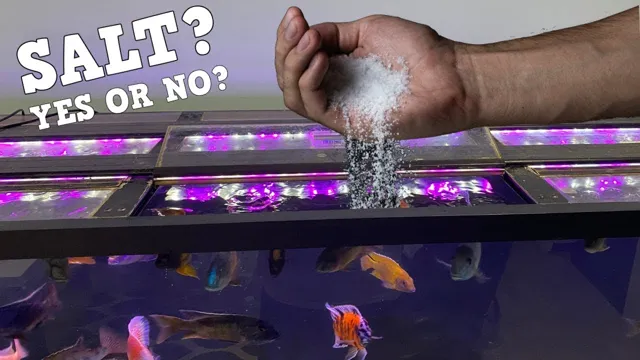
Observing the Fish
Observing fish in their natural habitat can be both fascinating and informative, but it’s important to identify any problems that may arise. One common issue is overcrowding, which can lead to aggressive behavior and increased stress levels among the fish. Another problem to watch out for is poor water quality, which can result from overfeeding or lack of proper filtration. (See Also: How to Get Rid of an Aquarium Fish Tank: Tips for Proper Disposal and Donations.)
This can lead to health problems and even death among the fish. It’s crucial to regularly monitor the aquarium environment and take appropriate measures to ensure the fish are healthy and happy. By identifying and addressing any problems, you can create a thriving aquatic ecosystem and enjoy watching the fish thrive in their surroundings.
Reducing Salt Levels
If you’re looking to bring down the salt level in your aquarium, there are a few things you can try. First and foremost, it’s important to understand why the salt level is high in the first place – perhaps you’ve recently added more salt to the water, or maybe your tank is experiencing excessive evaporation. Once you’ve identified the cause, you can start taking action to reduce the salt level.
One simple method is to perform partial water changes, replacing a portion of the existing water with freshwater to dilute the salt concentration. You can also try using activated carbon, which can help absorb excess salt from the water. Another option is to add a deionization cartridge to your filtration system, which can help remove excess salt ions.
Finally, make sure you’re not overfeeding your fish, as excess food can break down and increase salt levels in the tank. With a little bit of effort and attention, you should be able to bring your aquarium’s salt level back down to a healthy range.
Partial Water Changes
If you’re looking to reduce the salt levels in your aquarium, one effective method is through partial water changes. This involves removing a portion of the aquarium water and replacing it with fresh water that has a lower salinity level. The amount of water you change will depend on the size of your tank and the current salinity levels.
It’s important to monitor the salinity levels before and after the water change to ensure the levels are slowly decreasing. Drastic changes in salinity levels can shock aquatic life and cause harm. Another tip is to use a hydrometer or refractometer to accurately measure the salinity levels.
This will allow you to make informed decisions when conducting partial water changes and adjust accordingly. It’s also important to avoid adding any salt mix to the fresh water used for the water change as this will defeat the purpose of trying to lower the salinity levels. Remember to also maintain a consistent water temperature and provide adequate filtration to promote a healthy aquatic environment.
By implementing these steps and regularly conducting partial water changes, you can effectively reduce the salt levels in your aquarium while ensuring the well-being of your aquatic inhabitants.
Using Reverse Osmosis Water
If you want to reduce salt levels in your water, one effective solution is to use reverse osmosis water. This filtration process removes impurities such as salt, minerals, and other contaminants from tap and well water, leaving behind pure drinking water. The reverse osmosis process involves forcing water through a semi-permeable membrane that effectively filters out small molecules such as salt.
This results in water that is high in purity and low in salt content. If you’re looking to reduce salt intake for health reasons or want to improve the taste of your drinking water, using reverse osmosis water can be a great option. By using this process, you’ll get the benefits of pure, clean water without the added salt. (See Also: How to Adjust pH in Freshwater Aquarium: A Comprehensive Guide for Beginners)
Adding Freshwater Plants
If you’re looking to reduce the salt levels in your aquarium, adding freshwater plants can be a great solution. Plants naturally absorb some of the excess salt in the water and release oxygen as a byproduct, making your tank a healthier environment for your fish. Some of the best freshwater plants for reducing salt levels include water sprite, java moss, and hornwort.
Not only do these plants help with salt reduction, but they also add visual interest to your aquarium and provide hiding places for your fish. Plus, they’re relatively easy to maintain and can make a big difference in the overall health of your aquatic ecosystem. So, if you’re struggling with high salt levels in your aquarium, try adding some freshwater plants and see the difference for yourself.
Preventing High Salt Levels
If you’re wondering how to bring salt levels down in your aquarium, there are a few ways to prevent high salt levels from occurring in the first place. First and foremost, make sure you’re not adding too much salt to your water during water changes or when setting up your tank. It’s also important to regularly test the salinity levels in your tank to monitor any changes.
If you do notice high salt levels, you can perform a partial water change to dilute the salt concentration. Another option is to use reverse osmosis (RO) water when doing water changes to avoid adding excess salt to your tank. Additionally, be mindful of any food or supplements you’re adding to your aquarium, as these can also contribute to high salt levels.
By taking these preventative measures, you can keep your aquarium’s salt levels in check and provide a healthy environment for your aquatic pets.
Using a Refractometer
When it comes to using a refractometer to check salt levels, it is important to take preventative measures to avoid high levels. This can be done by keeping an eye on the amount of salt being added to a solution and by diluting it as necessary. It’s also important to properly clean the refractometer before and after each use to ensure accurate readings.
Another helpful tip is to calibrate the refractometer regularly to maintain accuracy. By taking these steps, you can ensure that your salt levels remain within a healthy range and prevent any negative effects on your solution. So, next time you use a refractometer, keep these tips in mind to keep your solution balanced and healthy.
Avoiding Saltwater Additives
Preventing high salt levels in your saltwater aquarium can be tricky, but it’s important to avoid additives that can increase salt levels. Maintaining the proper salinity level is essential for the health and wellbeing of your aquatic creatures. Excessive levels of salt can lead to stress, illness, and even death in fish and invertebrates.
It’s best to use natural methods to maintain salinity levels, such as performing regular water changes and using live rock. These natural methods not only help to keep salt levels in check but also provide a more stable environment for your aquarium inhabitants. Additionally, avoid overfeeding, as excess food can contribute to high salt levels.
By following these tips, you can help to prevent the problems associated with high salt levels in your saltwater aquarium.
Conclusion
So, if you find yourself in a bit of a salty situation with your aquarium, don’t fret! With a little patience, some good ol’ fashioned water changes, and maybe a friendly snail or two, you can easily bring that salt level down. Remember, a happy aquarium equals a happy you (and fish!) so take a deep breath, grab a bucket, and get to it! Fishy high fives all around!” (See Also: How to Add Gravel to Aquarium: Tips and Tricks for Successful Set-Up)
FAQs
Why is the salt level important in an aquarium?
The salt level is important in an aquarium as it helps to maintain the health of the aquatic creatures living in it. It affects their ability to osmoregulate and can impact their overall wellbeing.
How often should you test the salt level in an aquarium?
You should test the salt level in an aquarium at least once a week, but ideally more often depending on the size and needs of your aquarium. This will help you keep track of any changes and adjust accordingly.
What are some signs that the salt level in an aquarium is too high?
Some signs that the salt level in an aquarium is too high include increased aggression in fish, difficulty breathing, and changes in behavior or appetite. You may also notice an accumulation of salt on the surface of the water and around the edges of the aquarium.
What are some ways to lower the salt level in an aquarium?
You can lower the salt level in an aquarium by performing partial water changes, using a reverse osmosis filter, or adding more freshwater to the aquarium. It is important to make changes gradually to avoid shocking the aquatic life.
Can adding salt to an aquarium have negative effects?
Yes, adding salt to an aquarium can have negative effects if done improperly or in excess. It can cause stress or harm to certain species of fish, damage live plants, and alter the pH or temperature of the water. It is important to monitor the salt level and make adjustments accordingly.
How does the salt level affect live plants in an aquarium?
The salt level can affect live plants in an aquarium by inhibiting their ability to take up nutrients and photosynthesize. Plants may become stunted or die off if the salt level is too high. It is important to research the specific needs of your plants and adjust the salt level accordingly.
Are there any alternative methods to salt for maintaining water quality in an aquarium?
Yes, there are alternative methods to salt for maintaining water quality in an aquarium. Some options include using activated carbon, adding beneficial bacteria, or using natural filtration methods such as live rock or sand. It is important to research and choose a method that is appropriate for your specific aquarium setup.

